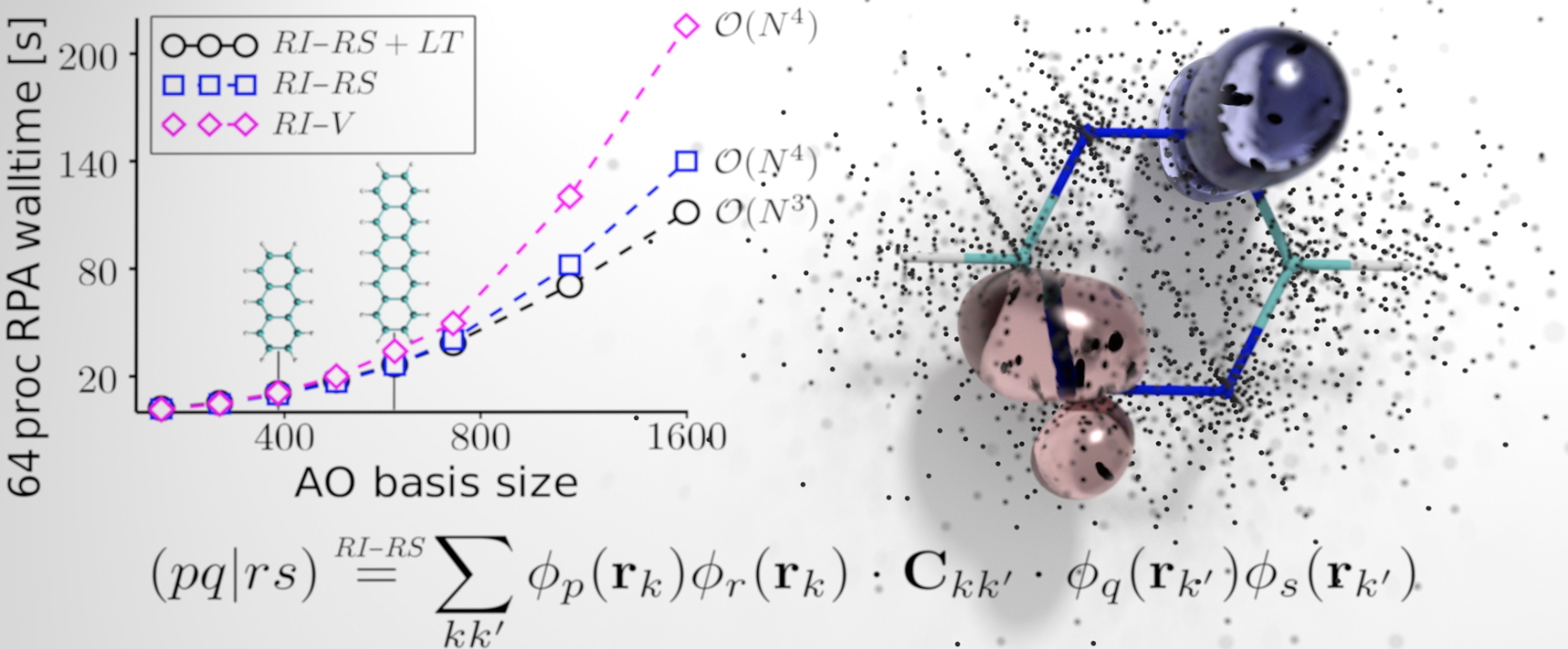Calculating the electronic properties of organic materials is an essential key to understanding and controlling the physical mechanisms at work in organic photovoltaic (PV) or OLED (organic light-emitting diode) devices. Whether it is for the study of the optical properties of these materials, or more indirectly for the study of transport properties, via doping mechanisms in particular, IRIG researchers have for several years been developing methodologies based on N-body perturbation theories, and more precisely the GW theory allowing
ab initio access (
i.e. from first principles) to quantities of interest for physical systems of experimental interest.
The most widely used and digitally least expensive method of calculating electronic structures (DFT,
Density Functional Theory) applies only to systems that are in their fundamental state. The GW method lies at the roots for calculation of molecular excitations such as absorption spectra, photo-emission spectra or fluorescence. But calculating the excitations of a 100-atom molecule by the GW method, although possible, requires the use of supercomputers.
The resulting collaboration with the Néel Institute has led to a series of theoretical innovations that have significantly reduced the computational complexity of the GW method. Coupled with other methods that we set up, our new developments pave the way for the first time to the simulation of very large systems (of the order of a thousand atoms) in a complex electrostatic environment.
These developments, implemented in the massively parallel computing code beDeft, are currently the subject of a major challenge on the AMD Rome extension of the Irene supercomputer at the CEA's Very Large Computing Centre (TGCC) in Bruyères-le-Châtel, with the aim of demonstrating the first all-electron GW calculation on a system of a thousand atoms.

Numerical cost of different GW methods for calculating coulombic interactions as a function of the number of atomic orbits. Illustration of the GW method in real space with the point cloud considered for the benzene molecule.
This work is thus based on two fundamental innovations: the formulation of a separable identity resolution technique, based on a real space approach (illustration) on the one hand, and on the other hand the application of complex analysis techniques known as analytical continuation techniques to the description of the screened coulombic potential (W), a central ingredient of the GW methodology.